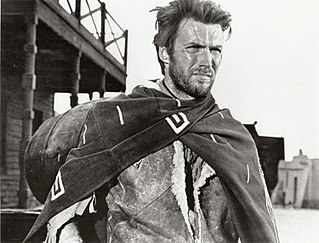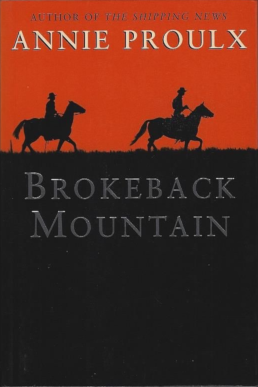Related Research Articles

A film genre is a stylistic or thematic category for motion pictures based on similarities either in the narrative elements, aesthetic approach, or the emotional response to the film.

In a literary work, film, or other narrative, the plot is the sequence of events in which each event affects the next one through the principle of cause-and-effect. The causal events of a plot can be thought of as a series of events linked by the connector "and so". Plots can vary from the simple—such as in a traditional ballad—to forming complex interwoven structures, with each part sometimes referred to as a subplot or imbroglio.
In literary criticism, stream of consciousness is a narrative mode or method that attempts "to depict the multitudinous thoughts and feelings which pass through the mind" of a narrator.
Metafiction is a form of fiction that emphasizes its own narrative structure in a way that inherently reminds the audience that they are reading or viewing a fictional work. Metafiction is self-conscious about language, literary form, and story-telling, and works of metafiction directly or indirectly draw attention to their status as artifacts. Metafiction is frequently used as a form of parody or a tool to undermine literary conventions and explore the relationship between literature and reality, life, and art.
A note is a string of text placed at the bottom of a page in a book or document or at the end of a chapter, volume, or the whole text. The note can provide an author's comments on the main text or citations of reference work in support of the text.

In fiction, a false protagonist is a literary technique, often used to make the plot more jarring or more memorable by fooling the audience's preconceptions, that constructs a character who the audience assumes is the protagonist but is later revealed not to be.
Narrative exposition, now often simply exposition, is the insertion of background information within a story or narrative. This information can be about the setting, characters' backstories, prior plot events, historical context, etc. In literature, exposition appears in the form of expository writing embedded within the narrative.
Narration is the use of a written or spoken commentary to convey a story to an audience. Narration is conveyed by a narrator: a specific person, or unspecified literary voice, developed by the creator of the story to deliver information to the audience, particularly about the plot: the series of events. Narration is a required element of all written stories, presenting the story in its entirety. It is optional in most other storytelling formats, such as films, plays, television shows and video games, in which the story can be conveyed through other means, like dialogue between characters or visual action.

Traditionally, conflict is a major element of narrative or dramatic structure that creates challenges in a story by adding uncertainty as to whether the goal will be achieved. In works of narrative, conflict is the challenge main characters need to solve to achieve their goals. However, narrative is not limited to a single conflict. In narrative, the term resolution refers to the closure or conclusion of the conflict, which may or may not occur by the story's end.
A frame story is a literary technique that serves as a companion piece to a story within a story, where an introductory or main narrative sets the stage either for a more emphasized second narrative or for a set of shorter stories. The frame story leads readers from a first story into one or more other stories within it. The frame story may also be used to inform readers about aspects of the secondary narrative(s) that may otherwise be hard to understand. This should not be confused with narrative structure. A notable example is The Decameron.
A plot twist is a literary technique that introduces a radical change in the direction or expected outcome of the plot in a work of fiction. When it happens near the end of a story, it is known as a twist ending or surprise ending. It may change the audience's perception of the preceding events, or introduce a new conflict that places it in a different context. A plot twist may be foreshadowed, to prepare the audience to accept it, but it usually comes with some element of surprise. There are various methods used to execute a plot twist, such as withholding information from the audience, or misleading them with ambiguous or false information. Not every plot has a twist, but some have multiple lesser ones, and some are defined by a single major twist.
Fiction writing is the composition of non-factual prose texts. Fictional writing often is produced as a story meant to entertain or convey an author's point of view. The result of this may be a short story, novel, novella, screenplay, or drama, which are all types of fictional writing styles. Different types of authors practice fictional writing, including novelists, playwrights, short story writers, radio dramatists and screenwriters.
Sébastien Japrisot was a French author, screenwriter and film director. His pseudonym was an anagram of Jean-Baptiste Rossi, his real name. Renowned for subverting the rules of the crime genre, Japrisot broke down the established formulas "into their component pieces to re-combine them in original and paradoxical ways." Some critics argue that though Japrisot's work may lack the explicit experimental element present in the novels of some of his contemporaries, it shows influences of structuralist theories and the unorthodox techniques of the New Novelists.

The rhetorical modes are a broad traditional classification of the major kinds of formal and academic writing by their rhetorical (persuasive) purpose: narration, description, exposition, and argumentation. First attempted by Samuel P. Newman in A Practical System of Rhetoric in 1827, the modes of discourse have long influenced US writing instruction and particularly the design of mass-market writing assessments, despite critiques of the explanatory power of these classifications for non-school writing.

"Brokeback Mountain" is a short story by American author Annie Proulx. It was originally published in The New Yorker on October 13, 1997, for which it won the National Magazine Award for Fiction in 1998. Proulx won a third place O. Henry Award for the story in 1998. A slightly expanded version of the story was published in Proulx's 1999 collection of short stories, Close Range: Wyoming Stories. The collection was a finalist for the 2000 Pulitzer Prize for Fiction.

The Fasti, sometimes translated as The Book of Days or On the Roman Calendar, is a six-book Latin poem written by the Roman poet Ovid and published in AD 8. Ovid is believed to have left the Fasti incomplete when he was exiled to Tomis by the emperor Augustus in 8 AD. Written in elegiac couplets and drawing on conventions of Greek and Latin didactic poetry, the Fasti is structured as a series of eye-witness reports and interviews by the first-person vates with Roman deities, who explain the origins of Roman holidays and associated customs—often with multiple aetiologies. The poem is a significant, and in some cases unique, source of fact in studies of religion in ancient Rome; and the influential anthropologist and ritualist J.G. Frazer translated and annotated the work for the Loeb Classical Library series. Each book covers one month, January through June, of the Roman calendar, and was written several years after Julius Caesar replaced the old system of Roman time-keeping with what would come to be known as the Julian calendar.
The following outline is provided as an overview of and topical guide to fiction:
In literature, pace or pacing is the speed at which a story is told—not necessarily the speed at which the story takes place. It is an essential element of storytelling that plays a significant role in maintaining reader interest, building tension, and conveying the desired emotional impact. The number of words needed to write about a certain event does not depend upon how much time the event takes to happen; it depends upon how important that moment is to the story. The pace is determined by the length of the scenes, how fast the action moves, and how quickly the reader is provided with information. A well-paced story effectively balances moments of high intensity and slower-paced sections to create a dynamic reading experience. It is also sometimes dictated by the genre of the story: comedies move faster than dramas; action adventures move faster than suspense. A dragging pace is characteristic of many novels turned down by publishers, and of some that find their way into print but not into the hearts and recommendations of readers. Manuscripts that move too slowly usually discourage readers from reading on. Through various editing techniques, such as cutting unnecessary details, rearranging scenes, or suggesting additions, editors assist in maintaining an engaging pace that keeps readers captivated. Yanna Popova and Elena Cuffari elaborate that as editors they, "explore the participatory structure of a narrative through its temporal unfolding and the specific, non-linear nature of the temporal dynamics of interacting with a storytelling agency". Popova and Cuffari make clear that the way an author unfolds a story through structuring that narrative's tale is essential to the way the audience will interpret it.
Scene and sequel are two types of written passages used by authors to advance the plot of a story. Scenes propel a story forward as the character attempts to achieve a goal. Sequels provide an opportunity for the character to react to the scene, analyze the new situation, and decide upon the next course of action.
References
- ↑ Myers, Jack; Wukasch, Don Charles (2009). Dictionary of poetic terms (New ed.). Denton, Tex.: University of North Texas Press. p. 244. ISBN 978-1-57441-166-9 . Retrieved 25 July 2011.
- 1 2 Lyon, Elizabeth (2008). Manuscript makeover: revision techniques no fiction writer can afford to ignore. Penguin. ISBN 978-0-399-53395-2 . Retrieved 25 July 2011.
- ↑ Murgatroyd, Paul (2005). Mythical and Legendary Narrative in Ovid's Fasti. Brill. p. 220-224. ISBN 9789047407225.
- ↑ Turco, Lewis (1999). The Book of Literary Terms: The Genres of Fiction, Drama, Nonfiction, Literary Criticism, and Scholarship. UPNE. p. 41. ISBN 9780874519556.
- ↑ Clifford, Tim (1 January 2013). The Middle School Writing Toolkit: Differentiated Instruction Across the Content Areas. Maupin House Publishing, Inc. p. 63. ISBN 978-0-929895-75-8 . Retrieved 29 July 2013.
- ↑ Mitchell, Angelyn (2002). The Freedom to Remember: Narrative, Slavery, and Gender in Contemporary Black Women's Fiction . Rutgers. p. 90. ISBN 9780813530697.
- ↑ Singleton, John (2001). The Creative Writing Workbook. Macmillan International Higher Education. p. 240. ISBN 9780333985229.
- ↑ "The Hook". Crafty Screenwriting. Retrieved 2014-05-21.
- ↑ "How to Write Your Screenplay's Hook". Scriptfly.com. Retrieved 2014-05-21.